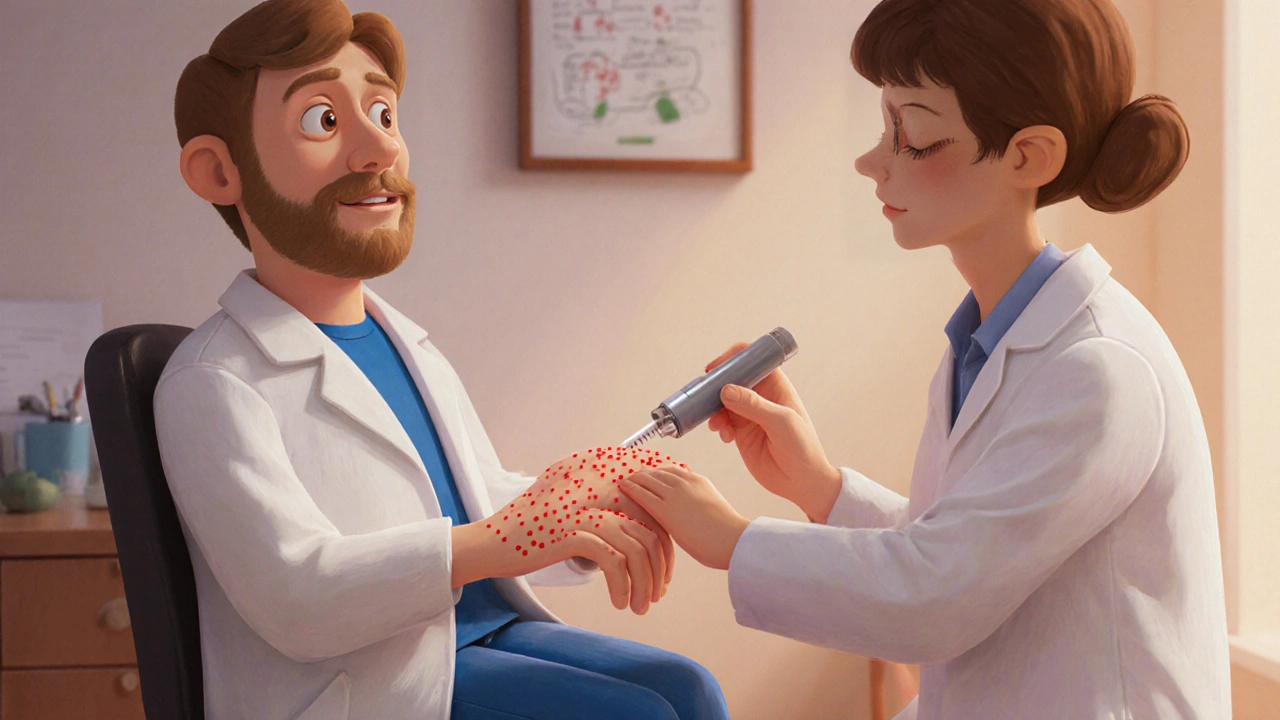Antibiotic De-labeling: Stop Misusing Antibiotics and Get It Right
When someone says they’re allergic to antibiotic de-labeling, the process of removing incorrect or outdated antibiotic allergy labels from patient records to improve treatment choices. Also known as antibiotic allergy reassessment, it’s not about removing labels just for the sake of it—it’s about fixing dangerous mistakes that lead to worse health outcomes. Too many people carry a label like "penicillin allergic" for life, even though 90% of them aren’t truly allergic. That label pushes doctors toward broader, costlier, and often less effective antibiotics—drugs that increase the risk of C. diff infections, drug resistance, and longer hospital stays.
Antibiotic de-labeling isn’t a guess. It’s a process backed by skin tests, graded challenges, and careful history reviews. A patient told they had a rash from amoxicillin at age 8? That’s often not a true allergy—it’s a viral rash. Someone who says they "got sick" after taking cephalexin? They probably just had a stomach bug. These are the cases where de-labeling changes everything. antibiotic allergy, an immune system reaction to an antibiotic that’s often misdiagnosed gets confused with side effects like nausea or diarrhea all the time. And when that happens, patients get stuck with drugs like vancomycin or clindamycin, which are harsher, more expensive, and fuel superbugs.
The connection between drug hypersensitivity, a delayed or immediate immune response to a medication that can mimic allergy symptoms and antibiotic de-labeling is clear. Studies show that patients with a documented penicillin allergy are three times more likely to get a resistant infection. But when you remove the false label—through simple, safe testing—those same patients can safely use first-line antibiotics again. That’s not just better care. It’s cheaper care. It’s faster recovery. It’s fewer trips to the ER.
Antibiotic de-labeling is happening in hospitals, clinics, and even some pharmacies. But it’s not automatic. You need to ask for it. If you’ve been told you’re allergic to an antibiotic, especially penicillin or sulfa, and you’ve never been tested, you’re probably carrying a label that’s doing more harm than good. The real danger isn’t the drug—it’s the fear of the drug. And that fear is often based on outdated info, a childhood reaction, or a misread symptom.
This collection of posts dives into the real-world consequences of mislabeled allergies, how to spot false reactions, and what steps you can take to get your antibiotic history corrected. You’ll find guides on antibiotic side effects, common reactions that aren’t allergies but are often treated like them, how to talk to your doctor about testing, and real cases where de-labeling changed treatment outcomes. Some posts look at specific drugs like cefaclor and doxycycline—how they’re wrongly avoided, and why they’re often safe. Others show how hospitals are building de-labeling programs that cut infection rates and save money.
You don’t need to live with a label that’s holding you back. Antibiotic de-labeling isn’t just a medical trend—it’s a proven way to get better care, avoid unnecessary drugs, and protect the antibiotics we still have. The next time you’re told you’re allergic to something, ask: "Was this ever tested?" Because the answer might just save your next infection from becoming a nightmare.

